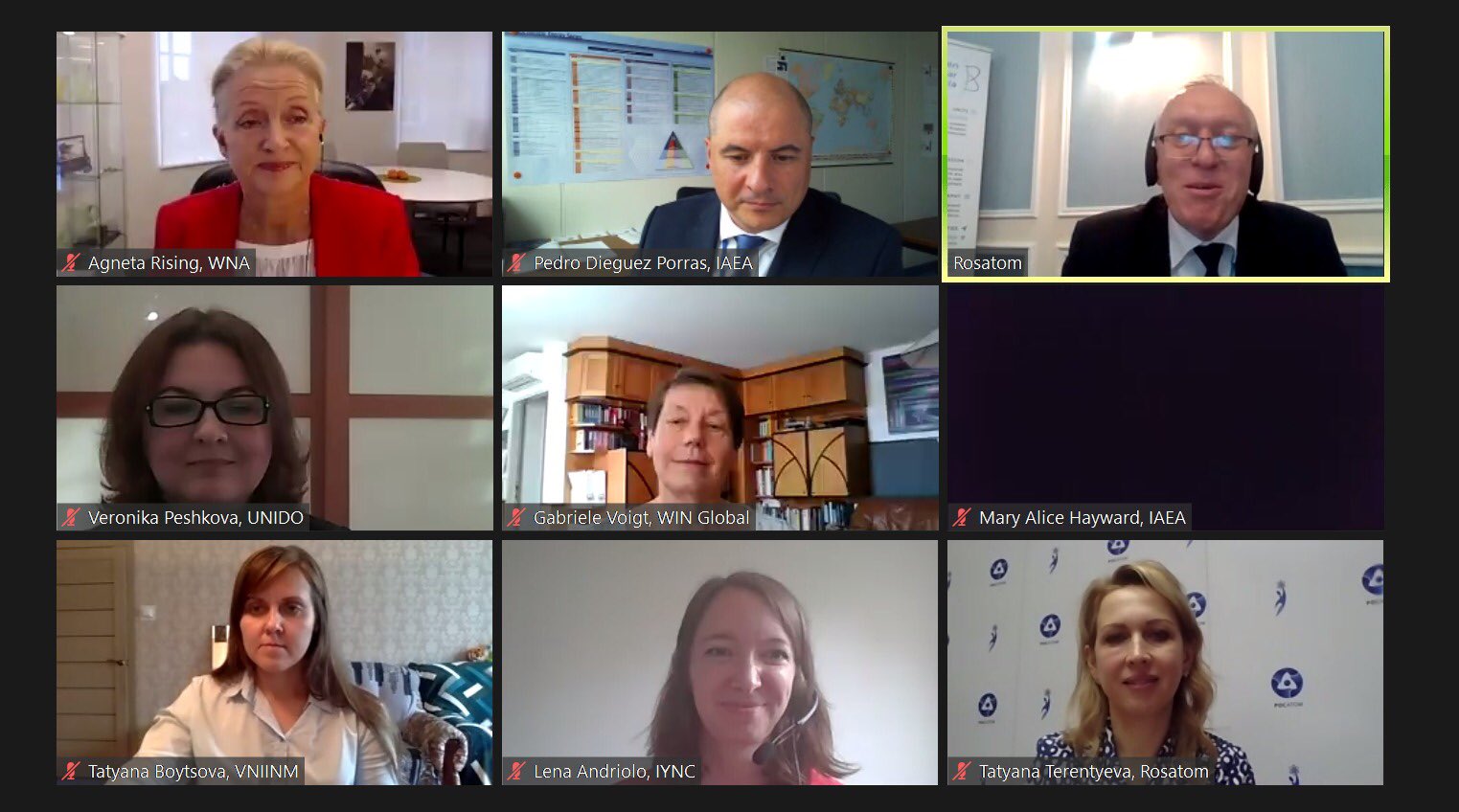[ad_1]
Contributor: Tatiana Terentyeva, Chief Human Resources Officer – Rosatom |
Tatiana Terentyeva, Chief Human Resources Officer – Rosatom

Global women empowerment champions and International Atomic Energy Agency (IAEA) join forces to challenge gender imbalanced human resources strategies in nuclear. This decision is the direct outcome of the discussion “Gender balance and inclusion in nuclear energy as the key to success in sustainable development”, which took place alongside the IAEA 64th session General Conference on 24 September 2020. It was organized by ROSATOM and Women in Nuclear Russia.
The discussion was attended by Director General of the World Nuclear Association (WNA) Agneta Rising, Deputy Director General and Head of Department of Management of the IAEA Mary Alice Hayward, Deputy Director General and Head of the Department of Nuclear Energy of the IAEA Mikhail Chudakov, President of Women in Nuclear Global Gabriele Voigt, President of the International Youth Nuclear Congress Lena Andriolo, ROSATOM Chief Human Resources Officer Tatyana Terentyeva, Technical Lead of the Department of Nuclear Energy of the IAEA Pedro Dieguez Porras, co-founder of the Russian Atomic Industry Women Foundation Angelica Kaperskaya and many others. More than one hundred fifty people from 23 countries joined the event.
The discussion explored the main gender balance and inclusion trends present in global nuclear industry that can be applied in other industries. WNA Director General Agneta Rising said: «The changes that are needed to transition to a more sustainable future will not happen without the participation of diverse workforce and the inclusion of women. However, the energy sector remains one of the more gender-imbalanced and the nuclear sector is no exception. Today women make up less than a quarter of the workforce in the nuclear sector worldwide. There are still too few women who choose to study STEM subjects, there is also so-called glass ceiling that is still making difficult for women to access to senior positions”.
According to the representative of the Eurasian Women’s Forum at the Council of Federation of Russia and UNIDO Ambassador Veronika Peshkova, global women’s labour force participation rate is still 26.5% below the rate of men. She added: “Theoretically, if women have experienced economic parity with men by 2025, it would have boosted global GDP by up to $28 trillion”.
ROSATOM Chief Human Resources Officer Tatiana Terentyeva noted: “Achieving our ambitious business goals means that we attract, develop, train and upskill employees all over the world. Our “human-centric” people strategy aims to unlock the hidden potential of each and every employee, no matter where they are from or what their position is. Diversity of mindset among the employees is essential for any corporation to grow”.
A part of this ecosystem is the Women in Nuclear Russia community. Its participants promote STEM practices among young women, offer the mentorship and stewardship opportunities, as well as the support to female nuclear workers (totaling 86,000 in Russia) with a view to inspire and nurture their management and leadership skill set.
The successful case studies presented by the participants have the potential to become the basis of the IAEA’s TECDOC series document, which will provide guidelines and recommendations for developing human resources strategies for gender balance for 171 countries – members of the IAEA.
The 75th anniversary of the Russian nuclear industry
The year 2020 marks the 75th anniversary of the Russian nuclear industry, a committed advocate for the peaceful use of atomic energy. Back in 1954, Russian scientists were the first to launch the very first nuclear power station. Today, after three quarters of a century, building on this historical heritage, Rosatom has transformed into a global industry leader with operations all around the globe, and the biggest portfolio of assets. Its unrivalled efforts in innovation have seen three units of the latest 3+ generation reactors, brought into operation to generate sustainable power and feed the world with low-carbon energy, as well as the world’s only nuclear icebreaker fleet, and undisputable contribution to nuclear medicine.
[ad_2]
Source link





